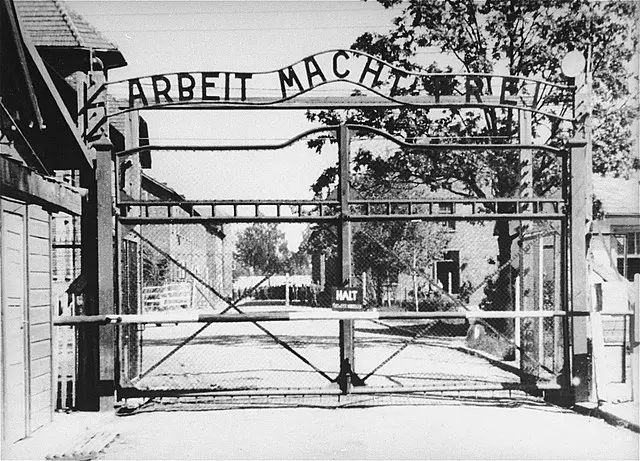The Auschwitz-Birkenau Memorial and Museum commemorates Nazi atrocities and human resilience. This site in Poland depicts the horrors of the Holocaust, inviting visitors from around the world to learn about human history, the prisoners’ legacy, and the importance of preserving such memories. We learn how Auschwitz and its subcamps were liberated and how remembrance and education can prevent such horrors. Honor the victims of Auschwitz-Birkenau, where history shapes our humanity.
Explore Auschwitz-Birkenau Memorial and Museum History
The Auschwitz-Birkenau Memorial and Museum commemorates and explains the camp’s complex history. Many exhibits cover Auschwitz II-Birkenau and the German Nazi concentration and extermination camp system. The camp’s massive watchtowers and gas chambers remind visitors of Nazi atrocities. The museum honors victims in every artifact and story, showing the Holocaust’s scale and brutality.
Besides preserving the site, the museum educates visitors about Auschwitz’s history and implications. Educational programs at the Auschwitz-Birkenau State Museum highlight the liberation of Auschwitz in January 1945, survival stories, and human resilience in the face of such adversity. The museum emphasizes the site’s World Heritage status to remind visitors of the Nazi concentration and extermination camp’s horrors and fight intolerance.
The Prisoners of Auschwitz: A Dark Legacy
The Holocaust education-focused Auschwitz-Birkenau Memorial and Museum depicts Auschwitz prisoners’ horrors. This Auschwitz camp left a legacy of suffering and resilience. The museum’s archives and exhibits honor the 1.1 million Jews, Poles, Romani, Soviet POWs, and other Nazi enemies who died. The museum uses personal belongings, photographs, and testimonies from Auschwitz to show how the German Nazi concentration and extermination camp tore apart lives.
This museum celebrates the liberation of Auschwitz on January 27, 1945, and inspires hope and education. It emphasizes remembering Auschwitz II-Birkenau’s gas chamber and crematorium atrocities to prevent repetition. Unmatched in Holocaust education, the Auschwitz-Birkenau State Museum shows the Holocaust’s scale and brutality. Preserving this World Heritage site and teaching future generations about hatred and intolerance promotes human rights and dignity worldwide.
A Testament to Humanity: Unesco and Auschwitz-Birkenau Preservation
The Auschwitz-Birkenau Memorial and Museum’s UNESCO World Heritage status shows the world’s memory of the camp’s atrocities. Beyond conservation, this recognition acknowledges the need to remember and educate about the Nazi concentration and extermination camp. UNESCO emphasises the site’s memorial and educational value, ensuring future generations learn about Auschwitz’s liberation and the prisoners’ stories. The preservation of Auschwitz-Birkenau promotes global dialogue about peace, humanity, and intolerance.
The Auschwitz I and II-Birkenau camps’ preservation efforts preserve their history. UNESCO and the Auschwitz-Birkenau Memorial and Museum preserve barracks, watchtowers, and railway tracks. These efforts show Auschwitz Memorial visitors the prisoners’ conditions and Nazi crimes. This tangible link to the past reminds us of human resilience and the need to fight division. UNESCO’s preservation of Auschwitz-Birkenau stresses the importance of Holocaust education and victim commemoration.
Through Auschwitz II Subcamps from Deportation to Liberation
The Auschwitz II-Birkenau subcamp narrative is crucial to understanding the Nazi concentration and extermination camp system. The Auschwitz prisoners’ harrowing deportation-to-liberation journey shows Nazi atrocities. The Auschwitz-Birkenau Memorial and Museum highlights the subcamps’ role in Auschwitz’s operations and educates the public. The Auschwitz Memorial preserves Birkenau Camp and other subcamps to remember survivors and emphasize the importance of remembrance and education in preventing future atrocities.
Auschwitz’s Impact on Polish Soil: History and Memory
Located in Oświęcim, Poland, the Auschwitz-Birkenau Memorial and Museum is significant historically and emotionally. The camp’s presence in Poland highlights the Nazi occupation and its devastation. Under German occupation, tens of thousands of Poles, Jews, Roma, Sinti, and other prisoners were deported to Auschwitz, suffering and resisting. The museum’s location in Poland emphasizes the Holocaust’s Jewish tragedy and Polish significance. The museum honors victims and preserves Poland’s WWII and postwar narrative by preserving this site.
The Auschwitz-Birkenau State Museum near Krakow offers a moving tour of Auschwitz I and II. Due to its proximity, Krakow’s Nazi concentration and extermination camps are visible to tourists. The museum’s Holocaust and Polish atrocities education explains the camp’s history and effects. Through exhibitions, educational programs, and camp preservation, the museum honors Holocaust survivors and encourages humanity to fight hatred and intolerance.
The Auschwitz Memorial and Museum FAQs
How significant is Auschwitz-Birkenau in WWII?
Major Holocaust and World War II sites include the Auschwitz-Birkenau Memorial and Museum in Oświęcim, Poland. As Nazi Germany’s largest concentration and extermination camp, it symbolizes the mass murder of over 1.1 million Jews, Poles, Roma, Sinti, Soviet POWs, and others. The memorial and museum raise awareness of the Holocaust and the need for education to prevent it.
How does the Auschwitz-Birkenau State Museum teach Holocaust?
Holocaust education relies on Auschwitz I and II, which the Auschwitz-Birkenau State Museum preserves. Through guided tours, educational programs, and exhibitions, the museum teaches visitors about the camp’s history, Nazi genocidal policies, and inmates’ personal stories. To teach future generations about the Holocaust, promote human rights, and fight intolerance.
Who died in Auschwitz deportation?
Deported from Nazi-occupied Europe in overcrowded cattle cars to Auschwitz was inhumane. Jewish, Pole, Roma, Sinti, Soviet POWs, and others were persecuted by Nazis. The process was crucial to the Nazi Final Solution, which killed Jews. Auschwitz forced others to work or undergo inhumane medical experiments, while others were killed in the gas chambers.
How does UNESCO protect Auschwitz-Birkenau?
UNESCO declared Auschwitz-Birkenau a World Heritage site in 1979, preserving it. The site’s global significance as a Holocaust memorial and warning against bigotry and racism is highlighted by this designation. UNESCO preserves the camp’s barracks, gas chambers, and victims’ personal artifacts for education and commemoration.
